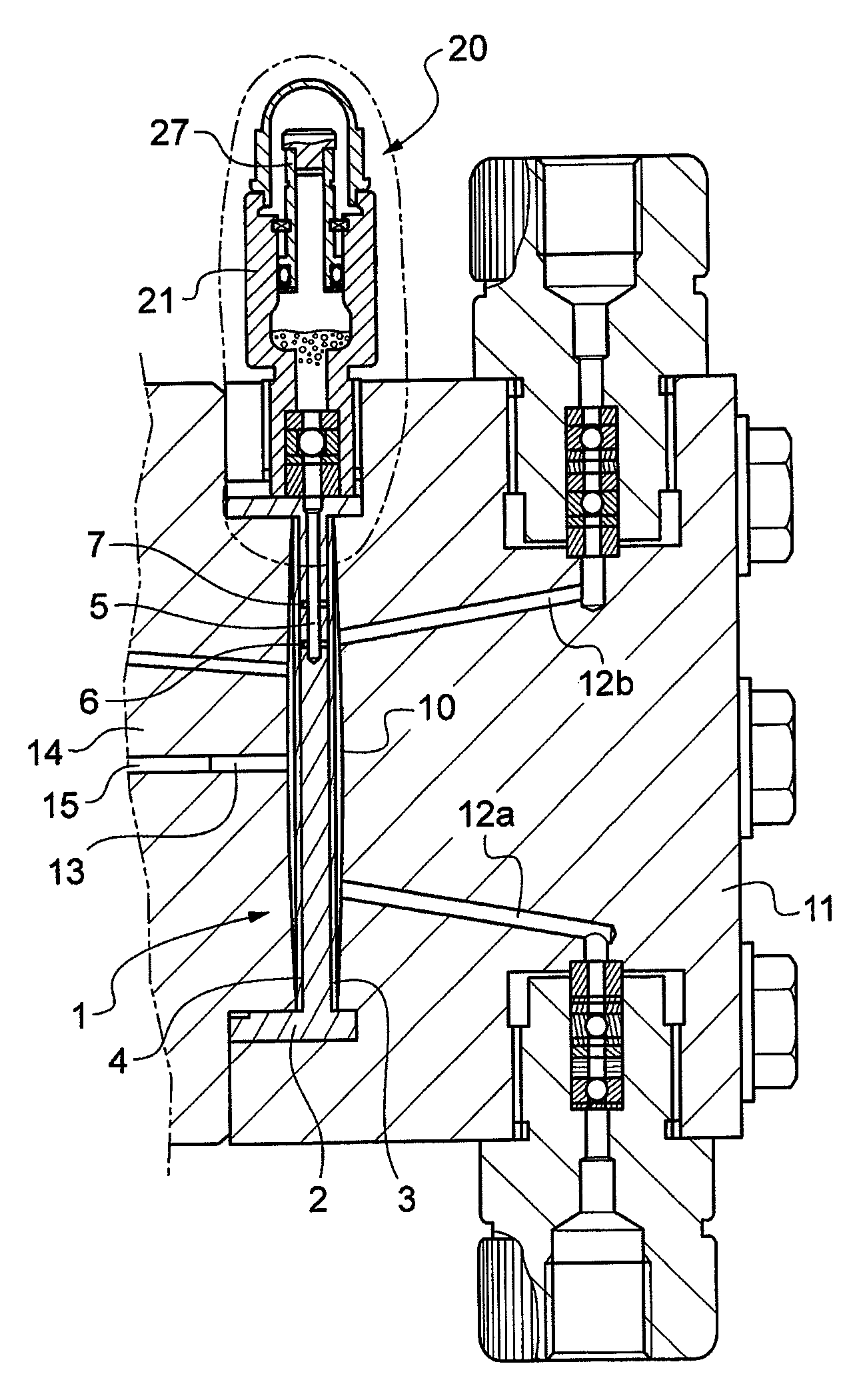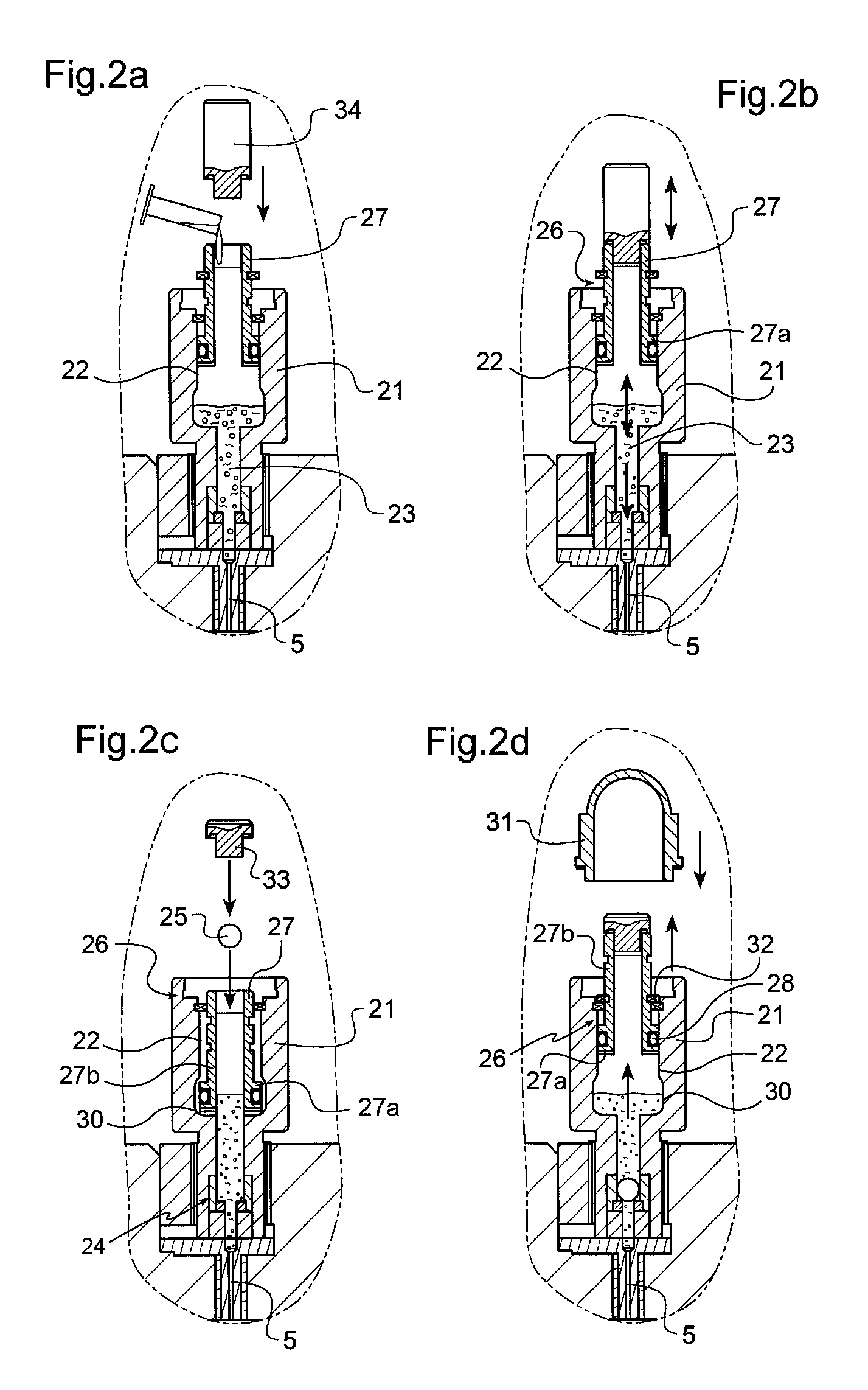Device for detecting breakage of a diaphragm in a hydraulically-actuated pump, a method of mounting such a device on a pump, and a pump fitted with such a device
a technology of hydraulically actuated pumps and devices, which is applied in the direction of flexible member pumps, machines/engines, positive displacement liquid engines, etc., can solve the problems of deteriorating pump performance, thin diaphragms not always perfectly fitted on the intermediate diaphragms, and affecting the performance of the pump
- Summary
- Abstract
- Description
- Claims
- Application Information
AI Technical Summary
Benefits of technology
Problems solved by technology
Method used
Image
Examples
Embodiment Construction
[0036]With reference to FIG. 1, the hydraulically-actuated pump in this example has a composite diaphragm 1 that comprises an intermediate diaphragm 2 between a first thin diaphragm 3 and a second thin diaphragm 4. The intermediate diaphragm 2 is thick and in the form of an elastically deformable dome. The pump has a duct 5 that is arranged in the thickness of the intermediate diaphragm 2 and has a first end opening to the outside of the pump and a second end connected to at least one drain channel. In this example, the second end is connected to a first drain channel 6 and to a second drain channel V. Each drain channel is also provided in the thickness of the intermediate diaphragm, extending transversely relative to the duct 5 in this example, so as to connect the duct 5 to the spaces that extend between each of the faces of the intermediate diaphragm 2 and the facing thin diaphragm.
[0037]The pump also has a pump chamber 10 defined in this example both by the first thin diaphragm...
PUM
| Property | Measurement | Unit |
|---|---|---|
| diameter | aaaaa | aaaaa |
| transparent | aaaaa | aaaaa |
| thickness | aaaaa | aaaaa |
Abstract
Description
Claims
Application Information
 Login to View More
Login to View More - R&D
- Intellectual Property
- Life Sciences
- Materials
- Tech Scout
- Unparalleled Data Quality
- Higher Quality Content
- 60% Fewer Hallucinations
Browse by: Latest US Patents, China's latest patents, Technical Efficacy Thesaurus, Application Domain, Technology Topic, Popular Technical Reports.
© 2025 PatSnap. All rights reserved.Legal|Privacy policy|Modern Slavery Act Transparency Statement|Sitemap|About US| Contact US: help@patsnap.com



